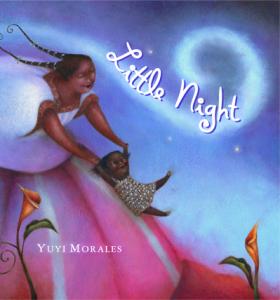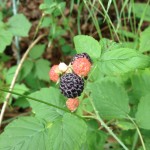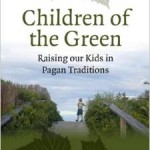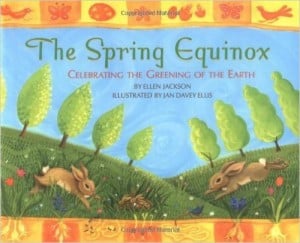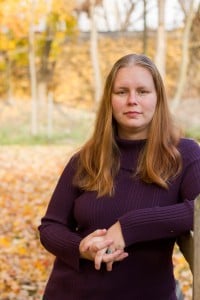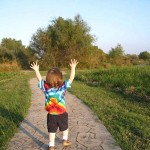By Meg Yardley
The Summer Solstice celebrates the longest day (and shortest night) of the year, the height of the sun’s power, the abundant energy and magic all around us, and our own sense of achievement and empowerment. You and your family might want to watch the sun set for the shortest night; host a costume party that celebrates magical transformation; make sun symbol art; drink sun tea; or write down something you want to transform and burn it in a small fire. This year I especially want to weave a giant sun… or maybe make a sunflower sundial! You’ll find some more activities here and here.
Some book themes related to the Summer Solstice could include:
- Summer – Obviously! I liked this list from the Denver public library, and I’m sure you can find many more at your local library or bookstore.
- The sun – Myths and stories about the sun and picture books about the yearly rhythm of the earth’s movement around the sun, or the daily (apparent) movement of the sun, would be excellent choices.
- Power and energy – This is a great time of year to celebrate our own abilities, our power from within, and the power that we can have when we all unite together.
- Magic and transformation – Books about transformation and magic are just right for this time of year, when energy is high and there is so much possibility for change. (And I’ve been working on a list of wonderful picture books about magic for a future post, so stay tuned.)
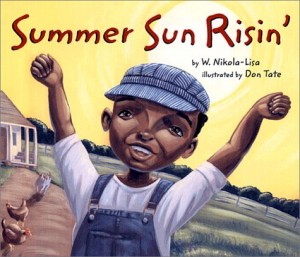 Summer Sun Risin’, by W. Nikola-Lisa, illustrated by Don Tate
Summer Sun Risin’, by W. Nikola-Lisa, illustrated by Don Tate
Over the course of a long summer day, a young boy helps his parents on the farm – while finding some time for play too. This story is told in simple rhymes that describe the boy’s activities while repeating the summer sun motif. The bright illustrations by Don Tate highlight sun and shadow, while the story brings to life the pleasures of work and rest. The book also lingers on the sweet moments of family togetherness (spreading a cloth together for lunch, reading bedtime stories). Older toddlers and up.
Pagan Notes: This book conveys a vivid attunement with the rhythms of a summer day. Although there’s nothing about the solstice in particular, the noontime page observes: “Summer sun pauses/ Summer sun waits,” which brought to my mind the root of the word “solstice” as “the point at which the sun stands still.” Also, the book’s structure emphasizes the length of the day (especially the last, wordless page which shows the next day’s sun rising – the reader has the sense that the night has lasted barely a page).
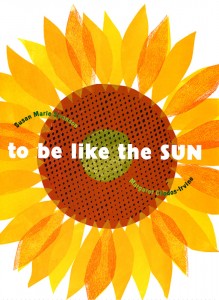 To Be Like the Sun, by Susan Marie Swanson, illustrated by Margaret Chodos-Irvine
To Be Like the Sun, by Susan Marie Swanson, illustrated by Margaret Chodos-Irvine
This book is told by a young girl speaking to a sunflower, describing its growth from seed, to plant, to flower, to seed again. It is more of a poem than a story, for example: “My hoe breaks apart/ the clods of brown earth/ but you do the real work/ down in the dark./ Not radish work or pumpkin,/ not thistle work – sunflower work./ All the instructions/ are written in your heart.” When I first read it, I thought this type of poem would appeal more to adults than to children, but my preschooler loved it (despite wishing that it had a little more about the character telling the story). The illustrations are bright, colorful cut-outs which show the young girl hoeing, planting, watering, and collecting seeds.
Pagan Notes: I went back and forth about whether this is a winter solstice or summer solstice read. In some ways, the emphasis of the book is really on the seed – as in the above quote. There’s a paradox to the solstices: at the time of greatest light, we can feel the wheel turning away from light and back toward the dark. This book contains both. In the summer, the flowering of our hard work bring us joy and light. What seeds of our joy can we keep to sustain us later in the dark time? As this book’s narrator says to the sunflower: “When the winter sky shivers with icy stars, I remember how hard you worked to be like the sun.”
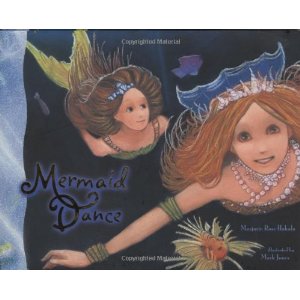 Mermaid Dance, by Marjorie Hakala, illustrated by Mark Jones
Mermaid Dance, by Marjorie Hakala, illustrated by Mark Jones
This book consists of a short, sweet narrative about mermaids having a feast for the Summer Solstice under the full moon; the brief text is brought to life with enchanting, imaginative illustrations of the mermaids swimming and enjoying their feast together. These mermaids are a little more interesting than your standard Disney fare, so they will likely light up the imagination of a child who loves fantasy. For toddlers and up.
Pagan Notes: The book doesn’t focus much on a deeper meaning to the Summer Solstice, but I always think this is a great festival for partying and having a good time, so the book fits in well! I liked that the mermaids have diverse hair and skin colors.
On a warm summer night, Mother Sky gets Little Night bathed, dressed, and ready for play. Little Night drinks from the Milky Way and wears a dress crocheted from clouds, and she loves to play peek-a-boo with her mama, who searches in all kinds of interesting places for her (like “the stripes of bees”). The story ends with Little Night tossing the moon up into the sky. The book is tender and playful and brings the nighttime alive with magic. For toddlers and up.
Pagan Notes: To me, this book captures the feeling of a long summer sunset, when the evening and twilight seem to linger forever and it doesn’t truly get dark until very late. I love the Goddess images of Mother Sky and Little Night.
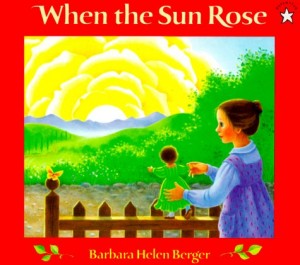 When the Sun Rose, by Barbara Helen Berger
When the Sun Rose, by Barbara Helen Berger
In the early morning, a young girl waits in her playhouse for her friend, who arrives in a chariot driven by a lion. Her friend wears a dress made of bright golden roses. They play together all day, but as the afternoon draws to a close, her friend leaves, promising to come again. As you may have guessed by now, her friend is apparently the sun! For toddlers and up.
Pagan Notes: This book celebrates the rhythm of the day and the beauty of the sun, bringing to mind images from many mythologies in which the sun is a chariot being driven across the sky. The lion is also a powerful character who seems fearsome, yet lies down peacefully and licks a bowl of cream – much as the heat of the sun can be very dangerous yet can also be nurturing.
Summer Days and Nights, by Wong Herbert Yee 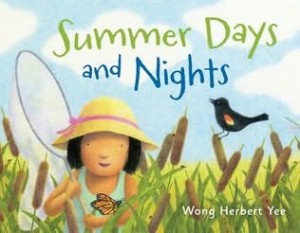
With simple, rhyming text, this book portrays a young girl enjoying a range of fun summer activities. When nighttime comes, it’s too hot to sleep, so her father takes her on a nighttime walk and she notices all the activity still going on outside. I think this was my favorite part of the book – I love the muted pastel images of the girl and her father exploring outside in the dark. The gold and green colors of the family’s shadowy evening picnic in the park are also gorgeous. For toddlers and up.
Pagan Notes: A celebration of the wonder and energy that are all around in summer time, with special attention to the animals and plants around us.
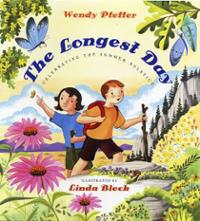 The Longest Day: Celebrating the Summer Solstice, by Wendy Pfeffer, illustrated by Linda Bleck
The Longest Day: Celebrating the Summer Solstice, by Wendy Pfeffer, illustrated by Linda Bleck
As I wrote about in my Winter Solstice book list, this is part of a nonfiction series about the solstices and equinoxes by Wendy Pfeffer. Like its Winter Solstice counterpart, this book explains the science of the Summer Solstice, describes different cultures’ ways of honoring the sun at this time, and gives a few crafts and science experiments at the end. This book is aimed at about 1st grade and up, though you could read a shortened version to younger children, who might appreciate the pictures.
Pagan Notes: I like this book’s description of several cultures’ sun gods and of ancient monuments which are aligned with the summer solstice sunrise/set.
Meg Yardley is a Pagan and a parent of two young children, living in the San Francisco Bay Area. She sings with the Turning Earth Singers, a Pagan music ensemble which recently led a “Pagan Kids’ Song and Story Time” workshop. She appreciates pictures books as a wonderful spiritual practice parents and young children can share.
Editor’s Note: You can find books reviewed at Pagan Families in our Amazon store.

